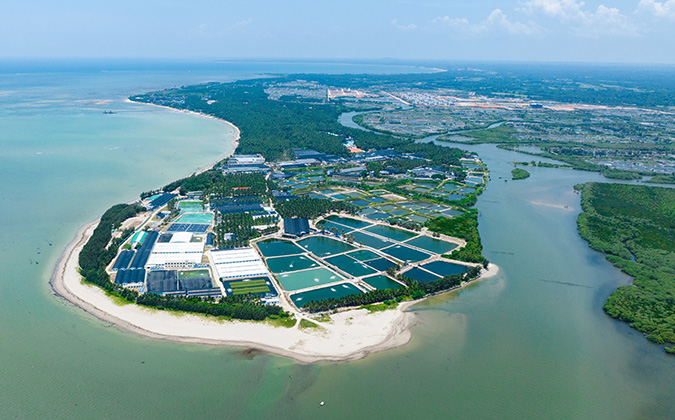
Fish Farm Forum is pleased to host this editorial page on behalf of Pharmaq.
Pharmaq
New system to assess gill disease could help salmon producers
Gill disease in Atlantic salmon is caused by a number of pathogens and has different clinical and pathological signs. This means that to date, there has been no standardized methodology developed for field diagnosis, despite the fact that gill health issues are a growing concern for salmon producers in all the major salmon-producing nations.
A new scoring system for affected gills, developed by an international research team and using samples from a disease outbreak in Chile, could help change all that.
Complex picture prompts new system
In the study, led by Sophie Fridman of the University of Stirling, samples were initially collected from a 2019 disease outbreak affecting harvest-sized fish in the Cupquelan Fjord system in the south of Chile.
The aim of the work was to help those working with salmon visually score different types of lesions associated with gill disease, providing a non-lethal approach to monitoring.1 It uses a 0 to 5 system to describe level of infection, where 0 is clear and 5 is severe. This also reflects the percentage of gills covered by lesions.
“In the beginning, the disease seen in the field was largely amoebic gill disease, for which there is a clear metric for describing the clinical damage in the field. But now, there is a combination of not only amoebic infection but also other bacteria and other pathological entities at the same time,” explained Carlos Lobos, business unit director, PHARMAQ Analytiq, who was involved in collecting the Chilean outbreak samples while working for Hendrix Genetics.
“In such cases, it’s not valuable to use the amoebic disease metric, so this new metric is in place for collecting information when it’s a multi-disease or multi-agent complex.”
Genetics, training and evaluation advantages
Demand in the industry for an approach to help identify fish that may be resistant to gill disease for selective breeding purposes was an initial prompt for the project, he explained.
The system also has the potential to differentiate between lesions associated with amoebic gill disease and those of complex gill disease. However, the researchers noted that it does require further validation using a larger sample size, in other environments and with different fish populations.
“When you have a unified metric for reading gill damage, teaching and training people who work with fish will be many times easier. The output of this will be to talk in the same language in terms of gill condition and facilitate the interpretation of the damage,” Lobos continued.
“On top of that, evaluation of different treatments that you would like to try will be much more simple.”
More tools to hone treatments
Feed additives, bath treatments and changes in handling and stocking are some of the options available for producers to tackle gill disease among salmon populations, he noted, while early detection methods allow for such measures to be brought in before any clinical signs of disease can be noted.
PHARMAQ Analytiq in Chile offers a gill health pack to producers in Chile that was originally tested in the Scottish salmon industry, providing a non-lethal approach to sampling for pathogens in the gills. The pack includes gill swabs, formalin pots, records and information about the best methods of sample collection.
“This is a very easy way of producing information much earlier than the other techniques; on top of that it is robust, cheaper, aligned with animal welfare as it doesn’t involve killing fish, and customized regarding the test to perform,” he added.
“Then, the new metric will tell you if any of your decisions based on feed additives, handling changes or densities are showing any impact or not.”
1 Fridman S, Tsairidou S, Jayasuriya N, Sobolewska H, Hamilton A, Lobos C, Houston RD, Rodger H, Bron J, Herath T. Assessment of marine gill disease in farmed Atlantic salmon (salmo salar) in Chile using a novel total gross gill scoring system: A case study. Microorganisms. 2021;9(12):2605.
Posted on: May 16, 2022







